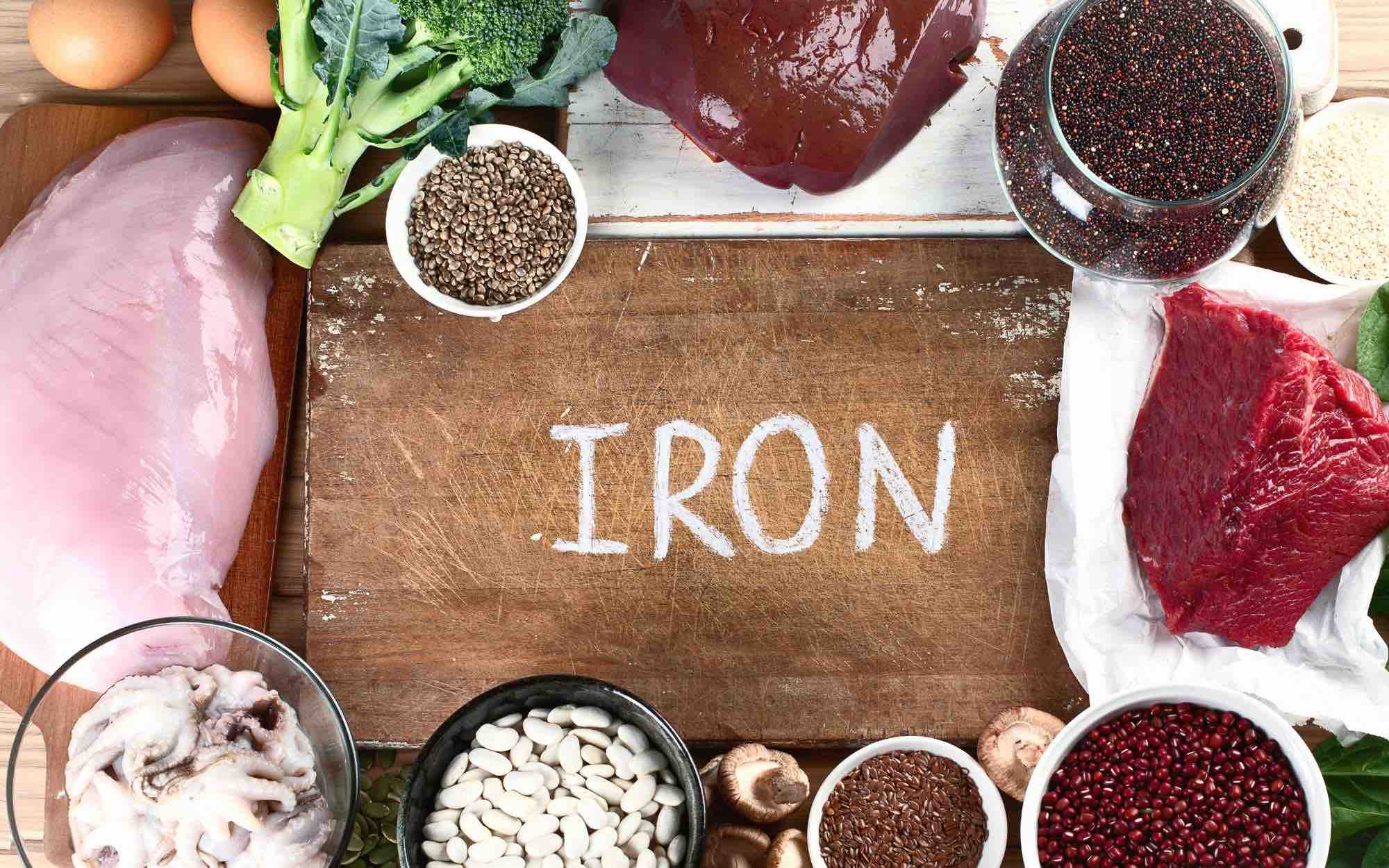By Ashley Reaver, MS, Registered Dietitian
Did you know that women usually lose about two cups of blood during vaginal birth and about four cups of blood following a C-section?! Iron needs during postpartum fluctuate based on your delivery experience, stage of postpartum recovery, and the return of your menstrual cycle.
In addition, women typically experience postpartum bleeding that lasts for a few weeks following delivery, called lochia. This bleeding is caused by the separation of the placenta from the uterine wall as the final phase of childbirth. Ths can leave an internal wound roughly the size of a dinner plate that bleeds until a scab forms.
While there are no formal recommendations for increasing iron intake after delivery, iron needs are likely increased in the acute recovery phase of postpartum, which takes place during the first two weeks after delivery. Your body must replenish the red blood cells lost during labor and delivery bleeding. This requires iron.
Role of iron in the body
Iron plays many different roles in the body, including energy metabolism, neurotransmitter production, immune function, as well as the metabolism of alcohol and drugs. Most notably, though, it’s key role in hemoglobin and myoglobin, compounds in red blood cells and muscle cells, respectively, that are responsible for transporting oxygen: throughout the bloodstream in the case of hemoglobin and into our muscles for myoglobin.
Without adequate iron during postpartum, the compound of hemoglobin cannot form resulting in impaired ability to transport oxygen around the body. Low iron postpartum can make the exhausting task of being a new parent even more exhausting. Iron deficiency can cause shortness of breath, fatigue, lightheadedness, and rapid heartbeat.
Your doctor likely checked your hemoglobin levels throughout your pregnancy to assess you for iron deficiency anemia. They may have checked them again during the postpartum period. If hemoglobin levels are low, an iron supplement may be recommended. You should not supplement with iron unless recommended by a doctor or dietitian based on your hemoglobin and/or ferritin levels.
Iron requirements during postpartum
Following the end of lochia (postpartum bleeding), your iron needs will be relatively low until your period returns. Postpartum women that are not yet menstruating have daily iron needs similar to men and postmenopausal women requiring only 8mg per day. Once your menstrual cycle returns, this number increases to 18mg per day in order to replenish the red blood cells lost during your monthly cycle.
Fun fact: your iron needs during pregnancy were 28 mg per day! That is an incredibly high number that is very difficult to meet with food alone. That is why most prenatal vitamins have a significant amount of iron. During pregnancy, you are producing a lot of new blood (and therefore red blood cells) to transport nutrients to your baby. Not to mention that you are providing all of the iron their body’s need, too. You are not only providing the iron for developing their red blood cells and all of the other important functions that iron does, as well, but you are helping them to build up an iron store that will get them through their first 4-6 months. This store is typically accumulated during the end of pregnancy.
Do iron needs increase for breastfeeding?
Your iron needs are not influenced by breastfeeding.
Human milk provides a low amount of highly biologically available iron, but it is not enough to meet your baby’s iron needs. They heavily rely on the iron store that you helped them develop in utero, but eventually it runs out. This is why it is recommended to introduce foods to your baby starting between 4-6 months, depending on their developmental milestones.
Good sources of iron for postpartum
Iron comes in two forms: heme and non-heme. Heme iron is easily absorbed and is found in animal foods, specifically red meats like beef, bison, and lamb, as well as some seafood like clams, mussels, oysters, octopus, and whelk.
Non-heme iron is found in plants and, while it is not as easily absorbed, it can still be utilized to meet iron needs. Good plant-based sources of iron are hemp seeds, pumpkin seeds, beans, lentils, peas, and fortified grain products. The absorption of non-heme iron can be enhanced by pairing it with vitamin C-rich foods like citrus.
Iron is just one of the important nutrients that aid in your postpartum healing, but there are many more! Each playing a critical role in returning your body to its normal state following pregnancy and delivery. To learn more about all of the nutrients that impact your recovery and are essential for breastfeeding, explore our page, learn more about our course, or purchase or cookbook to easily achieve your nutrient needs while your focus is on your little one!
References
Soma-Pillay, Priya, et al. “Physiological changes in pregnancy: review articles.” Cardiovascular journal of Africa 27.2 (2016): 89-94.
Wormer, Kelly C., Radia T. Jamil, and Suzanne B. Bryant. “Acute postpartum hemorrhage.” StatPearls StatPearls Publishing, 2022.U.S. Department of Agriculture and U.S. Department of Health and Human Services. Dietary Guidelines for Americans, 2020-2025. 9th Edition

Be the first to comment